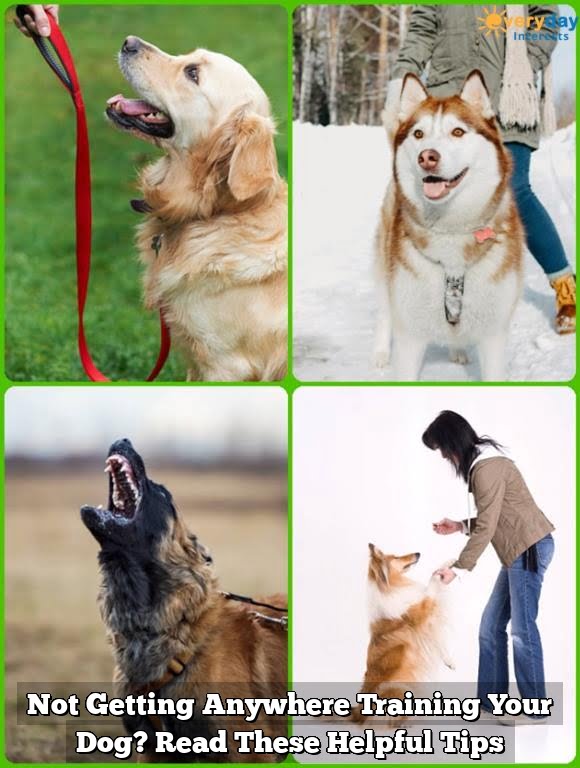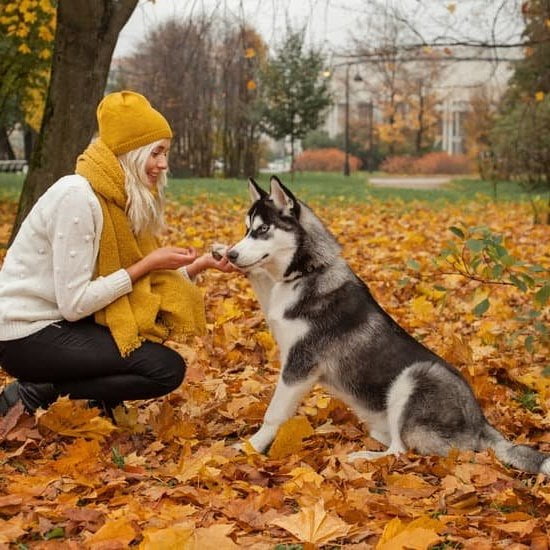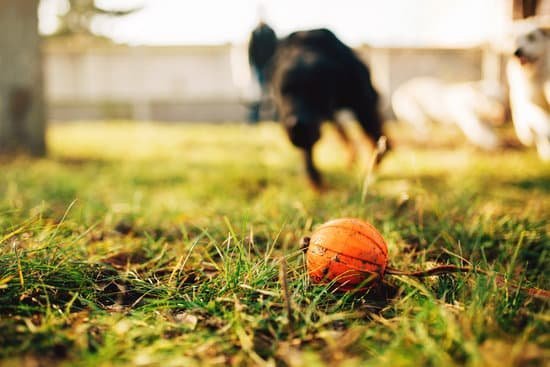Introduction
Dog training is a great way to bond with your dog and ensure that they lead a happy, healthy life. It is important, however, to recognize which methods of training work best for you and your pet. While positive reinforcement is always the ideal approach, there are some things you should avoid if you want to successfully train your pup.
When it comes to dog training, there’s no one-size-fits-all method for success. Each dog is an individual with different personalities, temperaments, and needs, so it’s wise to experiment until you find the best approach for your particular pup. You can do this by observing their behaviour during each session and adjusting accordingly.
One thing you should never do when it comes to dog training is ignore bad behaviour or punish your pet severely. Punishment isn’t necessary to get good results since puppies are highly receptive to positive reinforcement. With consistent training sessions and rewarding successful behaviours (with treats or praise), even the most stubborn dogs will learn how to behave properly in no time at all!
It’s also important not to put too much pressure on yourself—or your pup! Setting unreasonable expectations can be demotivating and may lead to mistakes or frustration on both ends of the leash. Take things slow and try breaking tasks into manageable chunks rather than trying everything at once—this makes the process less overwhelming for both of you!
Finally, make sure that every training session has a clear beginning and end without allowing either of you (dog or human) to get too complacent or bored. Switch things up regularly so that each session feels like an exciting new challenge and keep everyone engaged throughout—this will ensure more efficient learning over time.
Avoid Bribing Your Dog with Food
One of the most important things to remember when dog training is to never use food as a bribe. Bribing your dog with goodies may seem like it works in the short-term, but more often than not, it leads to confusion and long-term behavioral problems. Instead of offering a treat every time you want your pup to do something, provide positive reinforcement by offering verbal praise or petting instead. The goal should be to build a trusting relationship between you and your pup where they feel comfortable following your commands even without the aid of treats. Additionally, using treats for training too frequently may cause obesity in some breeds, so always keep an eye on how much food you are offering. When it comes time for mealtime, make sure your pup’s nutritional needs are met with healthy foods and carefully controlled portion sizes.
Don’t Respond to Your Dog’s Whining with Attention
One of the most common mistakes people make when trying to train their dogs is responding to their whining with attention. Dogs typically respond best to positive reinforcement and your giving them attention for whining won’t help matters. In cases like this, you should ignore the whining. If your dog perceives their whining as working towards getting a reward from you, such as petting or treats, they’ll continue to do it even more to get what they want. So instead, reward good behavior and quietly ignore any negative behaviors like whining. Tell yourself that anytime your dog whines, it’s not getting any response from you and it stops.
Dont Use Harsh Punishment to Train
When it comes to dog training, using harsh punishment methods should never be an option. Punishment can have serious consequences for your relationship with your pup and won’t effectively teach about what behaviors are acceptable or unacceptable. Instead of using verbal commands like “no” or even physical discipline to train a dog, positive reinforcement techniques should be used instead. These techniques include rewarding desirable behaviors with treats, verbal praise, petting, and play time. This will help the pup understand what is expected of them without putting fear or doubt into the process which can sometimes develop when harsher punishment tactics are used. Additionally, gentle-based training methods can also be more effective in teaching the pup a desired behavior overall than relying on punishment methods to curb inappropriate behavior.
Avoid Yelling and Intimidating Behavior
When it comes to effective dog training, yelling and intimidating behavior should always be avoided. Even if your pup is acting out or behaving in ways you don’t approve of, it’s important to remain calm and collected when showing how you want them to act. Yelling will only add more anxiousness and confusion for your pup, which can lead to further problems in the long-term. Additionally, avoid using physical or verbal punishment as it may send the wrong message and teach dogs that it’s acceptable to behave aggressively in response to a command given. Using positive reinforcement through treats, praise, and affection when they obey commands is a much healthier way of motivating desired behaviors.
Consistency is Key When Training Dogs
When it comes to training dogs, consistency is key. For example, if you are teaching your dog the basic commands of ‘sit’, ‘heel’, and ‘down’ don’t allow them to use these words differently each day. Rather, make sure you use the same phrase and give the same reward or consequence each time they act correctly or incorrectly. Helping your furry friend understand and remember the meaning of the commands will speed up their training considerably.
It’s also important that each member of the household sticks to the same routine when it comes to making rules and offering rewards or consequences for violating those rules. If one person allows a certain action to go unpunished but another doesn’t, this can be incredibly confusing for a dog who may not understand why one family member is more lenient than another. Additionally, if you introduce new rules without applying any consequences if they are broken it will be difficult for your pup to learn how to properly obey them. It’s key that you follow through with what has been established so that your pup stays consistent in their behavior and in their understanding of obedience. Finally, don’t change up things too frequently when training; once your canine companion learns a certain command, stick with it!
Invest in Quality Training Equipment
When training a dog it is important to invest in quality training equipment to ensure the safety and success of both the dog and the owner. The wrong type of equipment can lead to discomfort or injury, or incorrect behaviors in the pet being trained. Look for leashes, harnesses, collars, and muzzles that are comfortable and of appropriate size to match your dog’s breed. A proper fit is essential. Training clickers are great tools for positively reinforcing desired behaviors; find one that is easy to use and of a reasonable size. If you plan on keeping your pet outdoors for long periods of time, make sure to have outfitted with an outdoor kennel that is weatherproofed and insulated for their warmth and comfort. Finally, research different types of treats to use for rewards. Be sure to pick ones your pup loves; something that will motivate them as they progress through their training sessions!
Don’t Base Training on Size or Age of the Dog
When it comes to dog training, size and age of the dog should not be taken into consideration. Regardless of their age and size, all dogs have the capacity to learn and understand what is expected from them. Each breed requires its own individualized approach but even still, this should not be a limitation for training them correctly. Training should be tailored according to the individual dog – no two dogs are alike so there is no ‘one-size-fits-all’ approach to training them. It can be more challenging to train large breed which require more space as well as time for activities like fetch or running circles around a designated area, however this doesn’t mean that you can’t train smaller breeds in similar ways by using appropriate alternative tactics or tricks. Ultimately, when it comes down to it, successful dog training is about finding an effective method personalized for your pet’s individual needs.
Take Time to Reward Good Behaviors
When it comes to training your dog, one of the most important things to remember is to take time to reward good behaviors. Rewards are a powerful training tool for dogs, and should be given often for any desired behaviors; this reinforces the action in the dog’s mind. Rewards will keep your pet motivated and help him learn faster. The most effective rewards include verbal praise, treats, and physical touch such as a pat or a hug. Make sure that the rewards are timely (within the split second the behavior happens) and consistent – use them every time the behavior is repeated – so that they understand what you’re asking of them. Additionally, try to vary your rewards sometimes so that they stay motivated. A game of fetch can work just as well as a food reward on some days! Lastly, be sure not to over-reward; doing so can actually have an adverse effect on training by creating confusion or dependence on treats rather than good behavior.
Conclusion
It is important to remember that patience and persistence are key when it comes to dog training. Dogs cannot be expected to pick up new commands or behaviours immediately and may need more than one reminder before they respond correctly. It is important for owners to be consistent in their methods of reward and punishment as this will help their dogs understand what behaviour is desired and which behaviour is not tolerated. Training may take longer if a dog has already been used to certain undesirable habits but with patience, rewards, and consistency, these bad behaviours can eventually be overcome with effective discipline and training. Consistent reinforcement of well-behaved behaviour can also be incredibly helpful in teaching a dog moderation, respect, and even love. Taking the time to calmly simulate situations where a dog would normally misbehave can further aid in overcoming behavioural issues such as aggressive outbursts or excessive barking – setting clear parameters on certain behaviours in different circumstances will help them become easier habits over time. Patience is essential when working with both puppies and adult dogs as it allows us to focus on creating positive reinforcement without punishing undesired behaviours too harshly. With consistent practice, rewards, patience, and persistent direction from an experienced human trainer a canine companion can indeed become an addition that fits nicely into any home or family dynamic.

Welcome to the blog! I am a professional dog trainer and have been working with dogs for many years. In this blog, I will be discussing various topics related to dog training, including tips, tricks, and advice. I hope you find this information helpful and informative. Thanks for reading!





